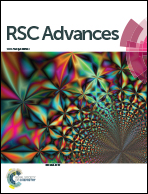Study on the graft modification mechanism of macroporous silica gel surface based on silane coupling agent vinyl triethoxysilane
Abstract
In this research, the graft modification mechanism of coupling agent vinyl triethoxysilane (KH-151) to macroporous silica gel was studied using a combination of multiple methods. SEM, FTIR, RAMAN, NMR and XPS were used to characterize the silica gel before and after grafting, determining the mechanism of the grafting reaction of the silane coupling agent. On this basis, the grafting rate of the coupling agent was accurately calculated by TGA weight loss. From the results of characterization, it can be seen that the coupling agent molecules have two connection types on the surface of silica gel, and the ratio of the two types is 43.51% and 56.49% respectively. The influences of hydration degree of the silica gel, coupling agent dosage and reaction temperature on the grafting rate were explored, and the optimal reaction conditions for the modification of macroporous silica gel were determined by the coupling agent through orthogonal experiments, that is, the hydration degree of silica gel of 10%, a coupling agent dosage of 12 mL, and a reaction temperature of 80 °C. Under optimal reaction conditions, the average grafting rate of the coupling agent vinyl triethoxysilane (KH-151) on macroporous silica gel is as high as 91.03%.



 Please wait while we load your content...
Please wait while we load your content...